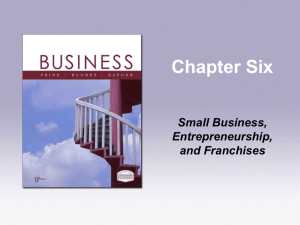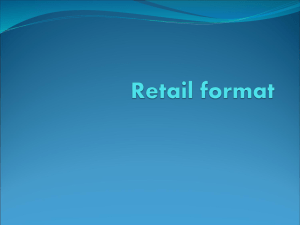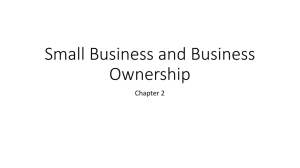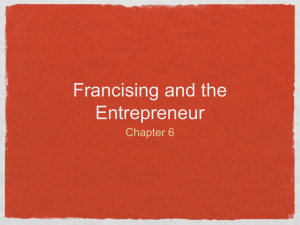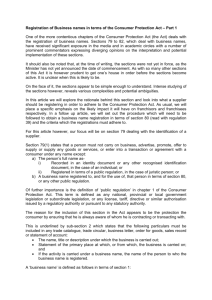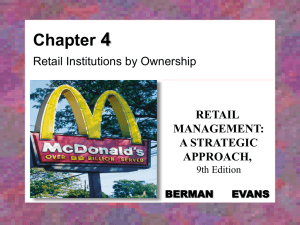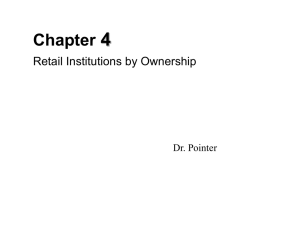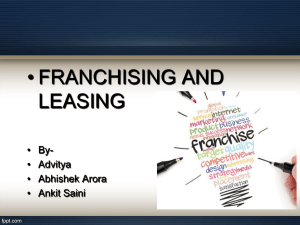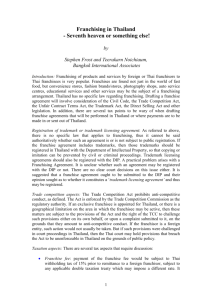CHAPTER
advertisement
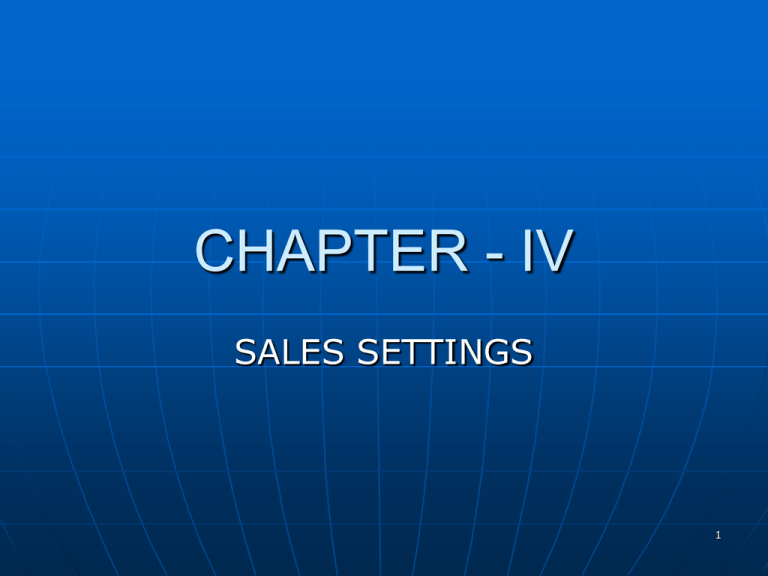
CHAPTER - IV SALES SETTINGS 1 Environmental and Managerial Forces Impacting Sales: A number of major environmental ( behavioral and technological) and managerial forces impact on how selling and sales management are and will be carried out 2 Behavioral Forces: As customers adjust to a changing environment, so sales has to adapt to variety of influences; Rising consumer and organizational buyer expectations more better treatment ,more quality ,services Customer avoidance of buyer – seller negotiations fixed price ,package deal Expanding power of major buyers, profitable customers ,retailers Globalization of markets adaptation Fragmentation of markets using segmentation strategies 3 Managerial Forces: Managers can respond to the changes in the environment by developing new strategies and tactics to enhance sales effectiveness, including; Employing direct marketing techniques Improving cooperation between sales and marketing Encouraging sales people to attend training programs and gain professional qualifications 4 Strategic Customer Management: The result of the managerial forces is to change the role and operation of the traditional sales organization from a focus on order- taking and order-making to strategic customer management Strategic customer management requires three activities to be performed; Intelligence; Enhancing customer knowledge to add value to customer relationships 5 Interfaces; refocusing sales force efforts into management and exploitation of critical interfaces that affect customer value traditional sales techniques with new one Integration; The process of welding all the company’s activities and processes that affect customer value into a single, integrated and sustained point of value delivery to customers (cooperation between departments of organization) 6 Sales Channels: Distribution channels involve two separate, yet closely connected, activities; Logistics or physical distribution management ( PDM) and Channels of distribution Logistics or PDM; the term logistics and PDM are interchangeable, although some writers infer that logistics is more concerned with strategic issues where as PDM relates to tactics. 7 Logistics conventionally starts with customers and works back towards to the original source of supply The term supply chain integration ( S C I) is sometimes used to describe its effective coordination The logistics mix describes the functional elements involved in this process; Order processing Materials handling Warehousing Inventory control Transportation Packaging 8 Channels of distributions; Management should constantly reappraise channels of distributions to make cost savings Marketing channels are determined by company policy and this determines how the sales force should be organized A sales channel is the route that the goods take through the selling process from supplier to customer Sometimes the sales channel is direct and can also be indirect 9 Selecting/reappraising sales channels; When selecting channels, the company must take into consideration the following; The market Channel costs The product Profit potential Channel structure Product life cycle 10 Characteristics of sales channels; Basically, manufacturer has a choice of one of four types of distribution; Direct Selective Intensive Exclusive 11 Industrial/Commercial/Public authority selling; (Organizational Customers) These categories are grouped together as sales approach is similar and behavioral patterns exhibited by each confirm to organizational behavior A number of characteristics in these types of market distinguish them from consumer markets 12 The characteristics are; Fewer customers Concentrated markets Complex purchasing decisions Long-term relationships Reciprocal trading Types of production; There are a number of different types of production; Job production ships Batch production furniture, books Flow production; cares Process production; chemicals 13 Selling for resale; This includes selling to retailers, most of whom are multiples which effectively perform their own wholesaling functions There are seven different types of selling outlet; Multiples, chain stores more 10 ,similar products Variety chains, 5 store different products Cooperative societies, Department stores, Independents, Mail order, Direct selling in homes 14 Franchising; A more recent trend in European retailing has been contractual system of franchising It is a corporate vertical marketing system ( VMS) as its power is based at a point in the channel that is one or more stages removed from the end customer Modern franchising is a US phenomenon that was introduced to the UK in the 1950s Franchising comes in a number of forms 15 From manufacturers to retailers Car manufacturer license From manufacturers to wholesalers cola From wholesalers to retailers Service firm sponsored franchises to retailers KFC Franchising arrangements have a common set of procedures; The franchisor offers expert advice on such matters as finance, locations, marketing 16 The franchisor promotes the image nationally or internationally Many franchise arrangements have a central purchasing system The franchise agreement provides a binding contract to both sides The franchisor often provides initial start up and then continues training to the franchisee A franchise arrangement normally requires a franchisee to pay a royalty or franchisee fee to the franchisor However, the franchisee owns the business and is not employed by the franchisor 17 Selling Services: Just like tangible products, a service must satisfy needs of buyers Services come in many forms and example include transportation, communication, clubs, cleaning, library, computing services, stock broking services etc. Special characteristics of services include intangibility, inseparability, storability and maintenance of standard 18 Sales promotion: Sales promotion include techniques that organization can use as part of their marketing effort Objectives that can be achieved through sales promotion activities include: Encouragement of repeat purchases Building of long term customer loyalty Encouragement of consumers to visit a particular sales outlet Building up of retail stock levels Widening or increasing the distribution of a product or brand 19 Sales promotion include: Price reductions, Gifts, Competition, Lotteries, Vouchers or Coupons, Cash bonuses etc. Sales promotion techniques cover : Consumer promotion – pull techniques Trade promotions – Push techniques Sales force promotions: These are promotions to the sales force, but some apply to distributors and retailers 20 Exhibitions are tangentially related to sales settings as the objectives not to sell from display stands, although in some circumstances exhibitions and trade fairs are where most business takes place Generally speaking, their function is to build up good will and prepare the way for future sales 21 Public relations: Public relations covers a broader spectrum than selling or indeed marketing Its application is wider and encompasses the entire organization and its various external and internal publics Jefkins defines Seven basic publics; The community, Employees, Government, The financial community, Distributors, Consumers 22 Corporate public relations; This is concerned with group image and based on long term, carefully planned program designed to achieve maximum recognition and understanding of the organization’s objectives and performance which is in keeping with realistic expectations Effective Public Relations: Effective PR depends upon the following: Setting specific objectives that are capable of evaluation Fully integrating the PR function into the organization 23


